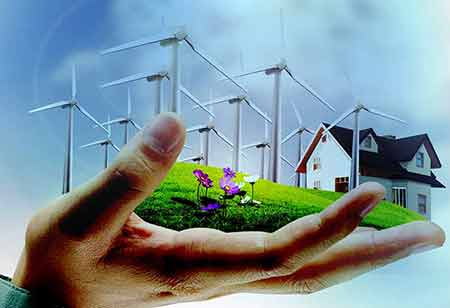Thank you for Subscribing to Energy Business Review Weekly Brief
Technologies Driving The Solar Power Industry
Solar power technology innovation is awaited to lower the cost and increase the efficiency of solar energy, resulting in increased adoption to attain renewable energy targets.

By
Energy Business Review | Thursday, January 06, 2022
Stay ahead of the industry with exclusive feature stories on the top companies, expert insights and the latest news delivered straight to your inbox. Subscribe today.
Synthetic perovskite crystals are more efficient and less expensive to manufacture than crystalline silicon, making them an attractive substitute for solar panel technology.
Solar power technology innovation is awaited to lower the cost and increase the efficiency of solar energy, resulting in increased adoption to attain renewable energy targets. The year 2020 has been remarkable, and however, there has been no shortage of progress in the solar energy sector. As a result, renewable energy deployments have accelerated worldwide, while older silicon-based technologies have reached their maximum efficiency.
Based on research, renewable energy capacity additions are climbing by 10% in 2021, thanks to sustained cost reductions and governmental assistance. Still, as silicon technology reaches its limits, the solar industry is exploring new ways to accelerate the adoption of solar power generation. This year has seen advances that will propel the solar energy sector forward in the coming years. Here are two of the most efficient solar energy methods.
Heterojunction Technologies or martWire
Heterojunction technology (HJT) implements layers of thin-film silicon on two sides of a silicon solar cell. The layers enhance light conversion and raise the silicon cell's efficiency by 25%. Even though the technology is not new, patent expirations allow different businesses to develop it more efficiently. As a result, deployments are projected to increase in the future years.
Perovskite Crystal Coated Panels
The mineral perovskite consists of calcium titanium oxides of a similar crystal structure. Synthetic perovskite crystals have been uncovered to be more efficient and more cost-effective to manufacture than crystalline silicon, making them an attractive substitute for solar panel technology.
Floating Solar Farms
Large-scale floating photovoltaic panel installations generate large amounts of electricity at a lower cost than land-based solar farms. They also provide the advantage of not requiring land or building installation. High temperatures decrease solar panel conversion rates; however, one study reveals that the cooling effect of the surrounding water allows floating panels to create up to 10 percent more electricity and slows module degradation. In addition, floating PV (photovoltaic) systems are easier to set up than land-based systems, and they have been demonstrated to decrease water evaporation while also enhancing water quality.






